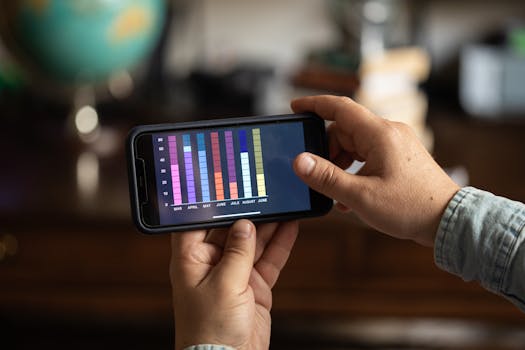Wellness
How to Track Your Mood Using Wellness Apps to Boost Everyday Balance
Learn how to track mood with wellness apps for a clearer mind and healthier routines. Detailed examples, expert rules, and actionable checklists for long-term well-being. Try these steps tonight!
Advertisement
Small swings in mood can change the whole course of your day. But notice how difficult it is to track mood patterns just by memory. Many end up feeling stuck without any reliable record, hinting at the need for a smarter solution.
Using wellness apps makes it much easier to spot connections between habits, stress, and happiness. When you track mood over time, you get hard data—not just guesswork—to guide healthier routines and better mindsets.
This guide shows you exactly what to look for in wellness apps, proven methods to track mood, and step-by-step examples of what works. You’ll finish with practical, actionable tips you can use right away.
Start Strong with Honest Daily Mood Tracking
Daily mood tracking in a wellness app gives you immediate, real feedback on your mental well-being. Seeing patterns on a screen makes it easier to turn vague feelings into concrete steps.
Just a few taps at the start or end of a day can make all the difference. You’ll catch slow changes that are easy to miss if you don’t track mood consistently across weeks and months.
Setting Up Your Mood Tracking Routine
Choose a consistent time each day when interruptions are unlikely. Many find right after waking or before bed works well. Use your app the exact same way each time.
Write your first entry using the words you’d say to a friend: “Today felt restless around noon,” or “I noticed calm after lunch.” This gives you authentic detail to review later.
Mark mood with an emoji, slider, or note—whatever the app allows. The key is to keep inputs simple. Use just enough context so future you can remember how that day felt.
Motivating Yourself to Build the Habit
Pair the habit with something rewarding, like listening to calming music or sipping tea. This small addition creates a cue that encourages repeated tracking night after night.
If you miss a day, skip guilt and just note the next one. Habit streaks build motivation, but the progress comes from reflection, not perfection. Seeing patterns develop keeps you going.
Use your past entries to write a brief “mood trend” message for yourself each week. Look for statements like, “Stress seems higher on Fridays.” These snapshots help anchor your progress and purpose.
| Feature | How It Works | Best For | Takeaway |
|---|---|---|---|
| Emoji Logging | Selects a mood face icon | Fast entries | Use when you want minimal effort |
| Color Sliders | Slide to show mood intensity | Visual thinkers | Shows nuanced ups and downs |
| Custom Tags | Add your own labels | Detail-focused users | Track mood triggers or themes |
| Mood Notes | Write out free-text descriptions | Reflective moments | Provides depth and personal insight |
| Automatic Reminders | Daily prompt to log entry | Busy lives | Keeps tracking regular and easy |
Reflect on Patterns to Understand Emotional Triggers
Reviewing mood entries each week uncovers trends you might not spot otherwise. Identifying emotional triggers in your wellness app helps you avoid old pitfalls and seek out positive moments.
Start your weekly review by scanning the past seven days. Pay close attention to what happens before a dip or burst in mood. Let the raw data guide, not just instinct.
Recognizing Individual Triggers and Positive Events
Some days, you’ll notice strong links between events and emotions. Finding these allows immediate adjustments. For example, seeing “Mood drop after too much screen time” might nudge you to take evening walks instead.
- Record physical cues: Jot down body reactions like tension or sluggishness, helping you catch triggers by more than just mood words.
- Note social interactions: Mark how different company—friends, coworkers—impacts mood, so you can address or repeat those situations.
- Rank stress levels: Use app sliders or numbers to see which days reached higher stress, helping plan recovery activities after tough periods.
- Highlight peak moments: Circle or star days when you felt energized, letting you recreate supportive conditions reliably week to week.
- Add context tags: Track mood with tags like “sleep,” “diet,” or “exercise” to spot real-world causes behind emotional swings.
When you see a pattern—like three low moods after work deadlines—set a gentle boundary, for example: “On deadline days, I’ll walk outside during lunch.”
Tracking Mood Swings with Consistency
Commit to logging mood on good and difficult days alike. Skipping tough days skews results. Reminders or partner check-ins can build consistent tracking, helping you spot true patterns over time.
- Enable app notifications: A nudge every evening serves as a reliable trigger for reflection, especially on days you’d overlook tracking mood.
- Pair tracking with routines: Attach mood logging to bedtime, breakfast, or daily walks, reinforcing the new habit through repetition and environmental cues.
- Use rewards: Mark completed weeks with a small treat—favorite show or a quiet moment—driving positive associations with consistency.
- Invite a friend: Share weekly summaries together, adding support and accountability for tracking mood, especially on uneven days.
- Review app summaries: Review graphs or weekly reviews to reinforce how steady tracking reveals otherwise hidden emotional ups and downs.
Every tracking win adds up. Even short streaks build self-awareness that stays useful long after the tracking itself becomes second nature.
Customize Your Mood Journal for Maximum Insight and Clarity
Personalizing your digital mood journal not only boosts engagement but deepens your understanding. Add your own language, custom tags, or specific goals to match your life’s details, making every entry vital for future reference.
Adding Context: Beyond Just Happy or Sad
List the exact reasons for your mood entries instead of vague words. For example: “Grade came back lower than expected” adds context missing from a basic “anxious.” This method clears up confusion when reviewing trends.
Attach environment details—location, time of day, or company present—to give richer clues. Writing “felt stressed at home in the evening,” or “calm after dinner with friends,” prompts actionable responses next time the situation repeats.
Connect your journal with other app trackers such as sleep or movement logs. Noticing “better mood after early run” builds confidence through multiple sources confirming the trend. Add a note: “Do this next week” for future motivation.
Visual Tweaks and Reminders for Easier Logging
Pick color codes or icon sets that truly match your mood expression. If red means tension to you, keep that convention through the whole app. Consistency helps brain and memory link visuals to feelings quickly.
Adjust reminder times for your actual rhythm. If you tend to reflect before bed, a 9 PM nudge helps; morning people might choose sunrise. Try both for a week by writing “Tested PM reminder—it worked.” Keep what feels natural.
Group similar emotions using custom tags to organize insights. If you log “irritated” and “frustrated,” tag both as “work stress” for pattern spotting. This makes theme-based searches and reviews much more effective.
Turn Insights into Actionable Wellness Changes
Your mood data is powerful only when it inspires action. By connecting mood patterns to self-care strategies, your wellness app becomes a real tool for change instead of just a tracking habit.
Setting Mini-Goals Based on Your Mood Trends
After noticing you track mood dips on Mondays, set a mini-goal: Take a 10-minute outside break every Monday for one month. Record how you feel right after—“Monday boost: outdoor break helped.”
If high moods follow social plans, plan these more regularly with intention: “I’ll call a friend for lunch on Fridays to see if it boosts my energy.” Link actions directly to evidence in your mood journal for real reinforcement.
Review these goals every Sunday evening. Write a one-sentence check-in: “Monday walks improved my mood two out of four times.” This builds motivation by focusing on what actually works—not guesses.
Responding to Negative Trends Before They Escalate
Spotting building low mood trends early lets you adjust course quickly. When you notice several days labeled “drained” or “tense,” pause new commitments and add a gentle self-care action: “Skipped evening emails, watched an uplifting show.”
If you see repeated triggers from certain situations—crowded meetings or skipped meals—plan to modify or opt out. Add practical notes: “Said no to extra meeting, noticed less stress.” These entries keep feedback loops short and results immediate.
Share patterns with a trusted friend, coach, or even by writing a note for yourself. Externalizing the trend helps you act faster—“Needed to vent on Thursday, felt relief”—and keeps motivation cycling.
Build Lasting Well-Being by Tracking Mood Every Day
Mood tracking with wellness apps makes emotional patterns visible and actionable. You gain ongoing insight instead of lingering uncertainty, and each day’s entry builds into a mapped history of how small factors shape bigger feelings.
This takes only a few minutes each day, but leads to focused changes you can rely on. Identifying both triggers and supports means you’re not guessing where your energy goes or what habits truly help your well-being flourish.
Next time you wonder why a week feels different, look for answers in your mood log. Use that knowledge to shape restful days, bring more positivity, and keep emotional balance a daily priority. Start your next entry tonight.
Trending Topics

Meditation Timers That Help You Stay Consistent
Stay consistent and mindful with meditation timers that structure sessions, track progress, and promote inner calm.
Keep ReadingYou may also like

Free Meditation Apps That Actually Calm Your Mind
Discover free meditation apps that genuinely relax your mind, improve focus, and help you find peace anytime, anywhere.
Keep Reading


